Genovesi Pattern
Genoese pattern from Italy.
The Genoese pattern (along with the Piedmontese) is a French suited design derived from the Paris pattern which had formerly been exported throughout Europe, used widely in casinos. The courts are not named and are divided diagonally with a plain bar. The jack of clubs has a triangular shield bearing the coat of arms of the former Spanish Netherlands. The colouring is often green, gold, red and black instead of the more usual French blue, red and yellow. Genoese packs have either 36, 40 or 52 cards and no corner indices. The pattern is also used in Belgium, so a maker's name helps with identification.

Above: Genoese pattern by Dal Negro, c.1966. The ace of hearts has the tax stamp and the year of production. The 300 Lire tax stamp was in use in Italy from 1954 to 1972, after which date tax stamps were abandoned. See the Box►
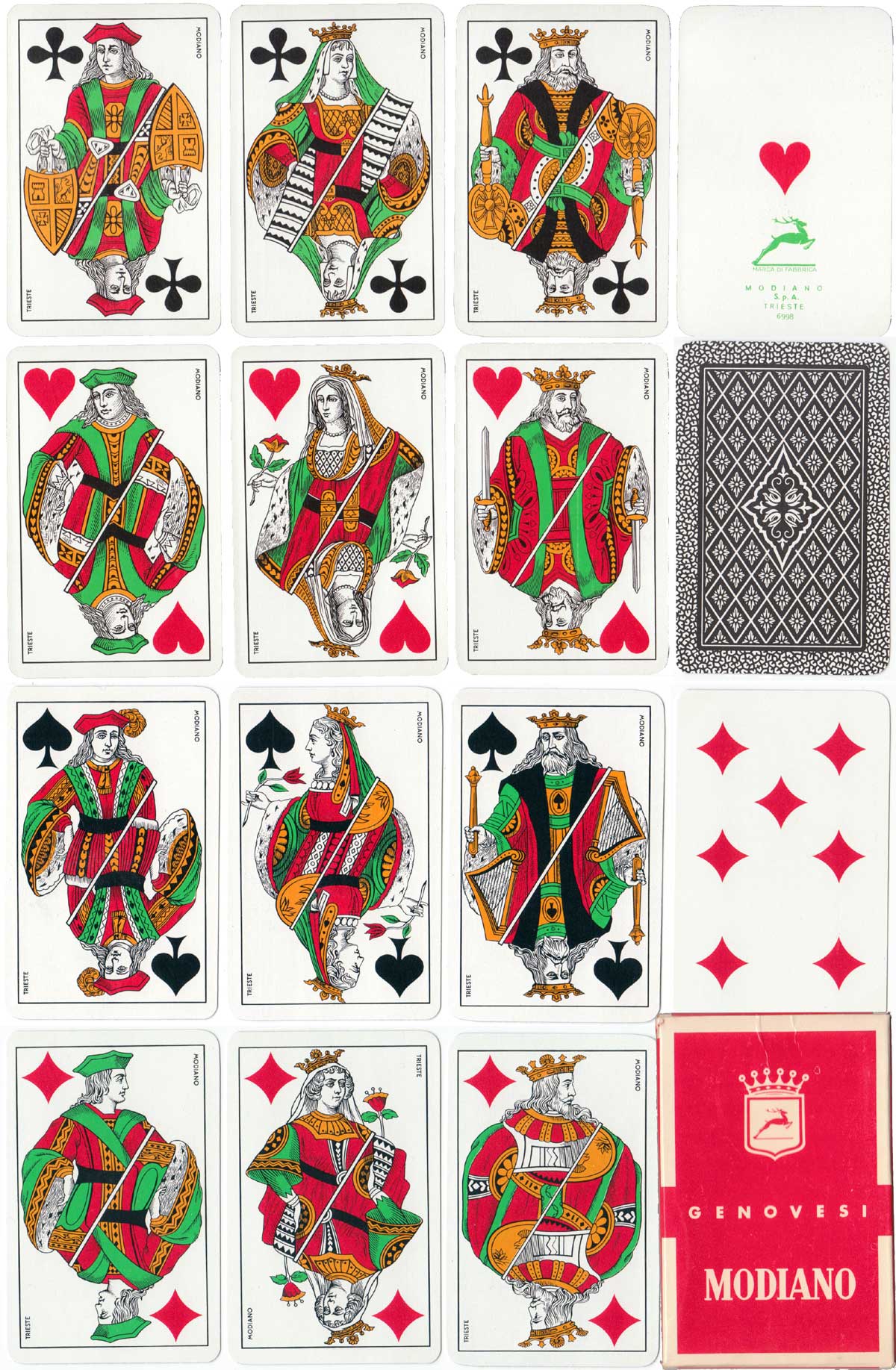
Above: Genoese pattern by Modiano, c.1998. All images courtesy Rex Pitts.
By Rex Pitts (1940-2021)
United Kingdom • Member since January 30, 2009
Rex's main interest was in card games, because, he said, they were cheap and easy to get hold of in his early days of collecting. He is well known for his extensive knowledge of Pepys games and his book is on the bookshelves of many.
His other interest was non-standard playing cards. He also had collections of sheet music, music CDs, models of London buses, London Transport timetables and maps and other objects that intrigued him.
Rex had a chequered career at school. He was expelled twice, on one occasion for smoking! Despite this he trained as a radio engineer and worked for the BBC in the World Service.
Later he moved into sales and worked for a firm that made all kinds of packaging, a job he enjoyed until his retirement. He became an expert on boxes and would always investigate those that held his cards. He could always recognize a box made for Pepys, which were the same as those of Alf Cooke’s Universal Playing Card Company, who printed the card games. This interest changed into an ability to make and mend boxes, which he did with great dexterity. He loved this kind of handicraft work.
His dexterity of hand and eye soon led to his making card games of his own design. He spent hours and hours carefully cutting them out and colouring them by hand.

Related Articles

Portraits of a Lady
Portraits of a Lady by Lo Scarabeo, 2003.
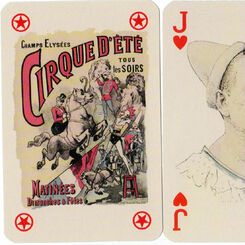
Il Circo
Il Circo illustrated by Jules Garnier, published by Lo Scarabeo, 2004.

Kaffeehaus-Pikett
Kaffeehaus-Pikett featuring the old Viennese Large Crown pattern, made by ASS.

Dal Negro Bridge set
Dal Negro Bridge set featuring old Vienna pattern courts.

Carte Romane
“Carte Romane” designed by Giorgio Pessione, 1973, celebrating the history of Rome.
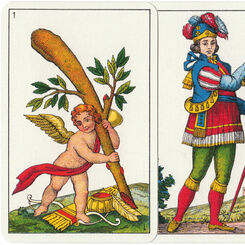
Sarde Pattern
Sarde pattern published by Modiano, c.1975, based on early XIX century Spanish model.
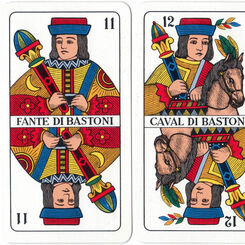
Triestine Pattern
The Triestine pattern is derived from the Venetian (Trevisane) pattern but with its own characterist...

Trentine Pattern
Trentine Pattern

Primiera Bolognese
Primiera Bolognese by Modiano, c.1975

Bergamasche Pattern
Bergamasche Pattern by Modiano, 1970s.

Hermanos Solesio
“Money Bag” pattern by Hermanos Solesi, late 18th c.

Brepols Genoese pattern
“Cartes Françaises” and Genoese pattern by Brepols.
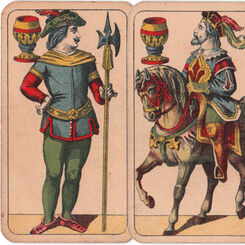
Fantasy Italian style
Fantasy latin-suited pack with court figures in pseudo-medieval style, Fratelli Armanino, Genova, c....

Club Bridge
Modiano’s ‘Club Bridge’ is a new edition of a stylish deck originally published in c.1895.
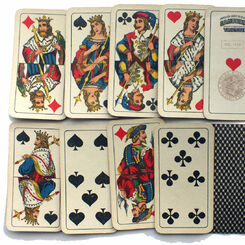
Lombardy (or Milanesi) pattern
The origins of the Lombardy pattern probably lie in the early 19th century when it was a full-length...

Small Tuscan Pattern
Small Tuscan Pattern

Brescia pattern
The Brescia pattern contains elements which come from a past age.
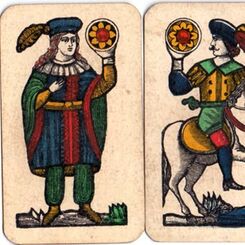
Romagnole pattern by Guglielmo Murari
Romagnole pattern by Guglielmo Murari c.1920

Sicilian Pattern
The Sicilian pack has a similar composition to the Neapolitan pack, and is small and squat in appear...

Neapolitan Pattern
Cartine da Gioco Vesuvio miniature Neapolitan pattern.
Most Popular
Our top articles from the past 60 days






















